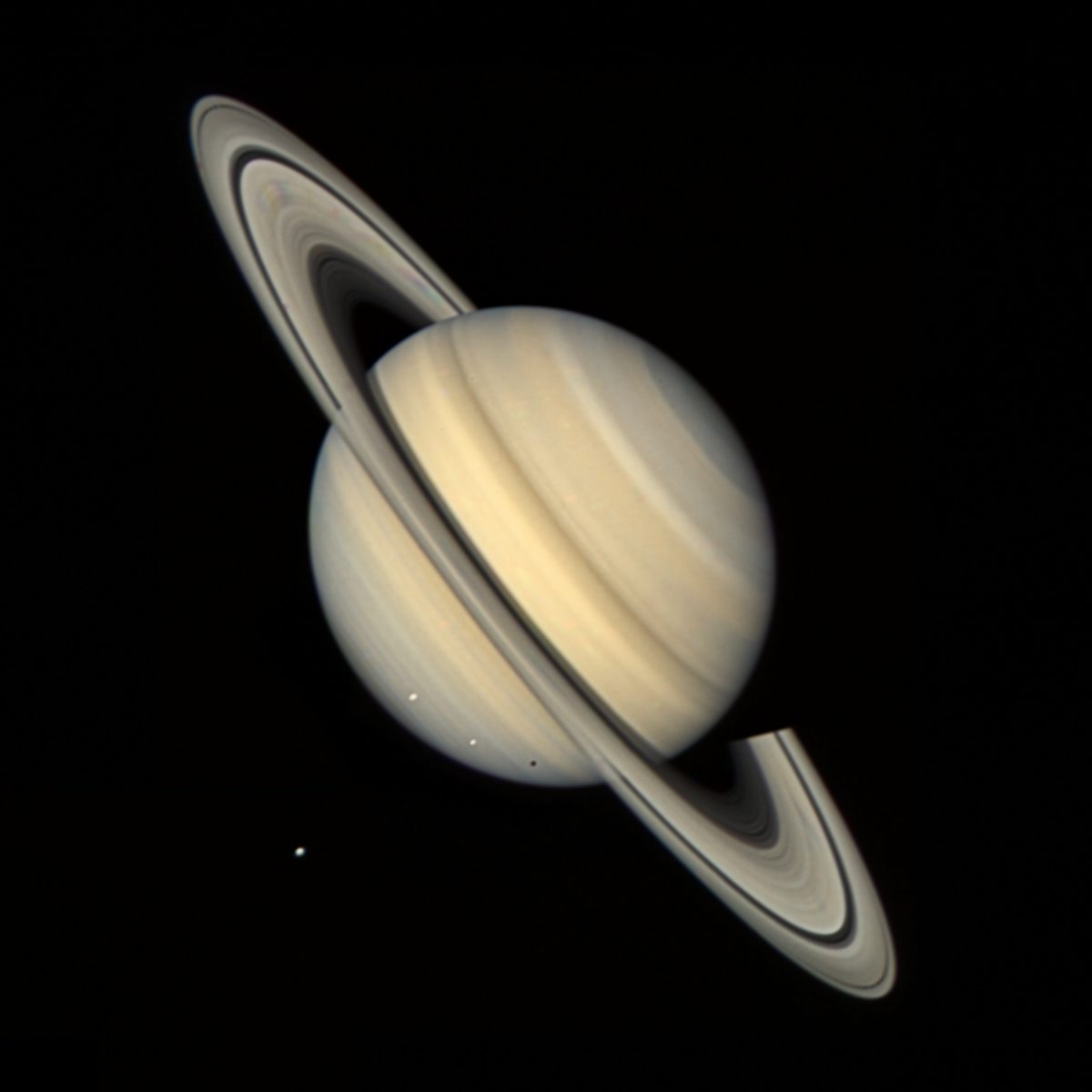Emily Lakdawalla • May 25, 2016
New work with 35-year-old data: Voyagers at Ganymede and Saturn
The Voyager data set is a gift to Earth that keeps on giving. This week, I've seen three great new images processed from this old data set. The first one was made by Ian Regan at my request. I pointed him to this classic view from Voyager 2, and asked him to make one that was just a bit closer to true color. Here is his result. I love it when moons make cameos in planet portraits.

Another awesome new product this week was made by Bjorn Jonsson. He's been working with the Voyager 1 Ganymede flyby data set, trying to process a global view, for some time. He recently had a breakthrough in repairing several crucial frames that were smeared when the Voyager scan platform moved while the photo was being captured, as he explains here.

Bjorn posting his Ganymede mosaic inspired Justin Cowart to share some work he's been doing on the other Voyager's Ganymede mosaics. Here's a view centered on Osiris crater. The crater is neat, but my favorite part of the image is below and to the left of it, where the slanting sunset light outlines fascinating topography around a different crater. There's another related mosaic at Justin's Flickr page.

Let’s Go Beyond The Horizon
Every success in space exploration is the result of the community of space enthusiasts, like you, who believe it is important. You can help usher in the next great era of space exploration with your gift today.
Donate Today

 Explore Worlds
Explore Worlds Find Life
Find Life Defend Earth
Defend Earth

